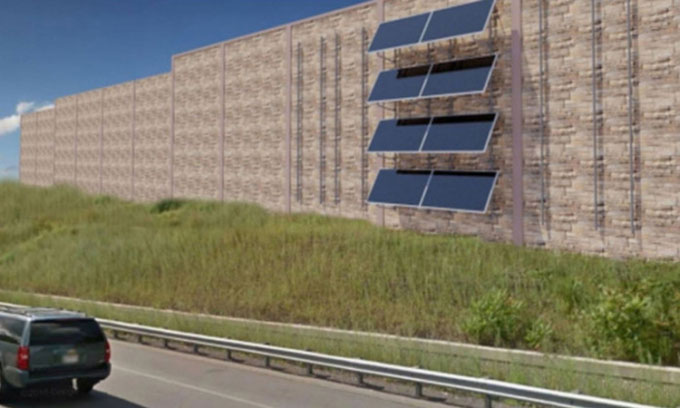Ko-Solar Plans to Install Solar Panels on Sound Barriers Along Interstate 95, Expected to Generate Enough Electricity for 100 Homes.
Massachusetts could become the first state in the U.S. to install solar panels on sound barriers, according to a report by Interesting Engineering on November 6. This innovative system is designed by Ko-Solar, a local company, and the project is set to launch in the spring of 2022.

Sound barriers can be utilized for solar power generation. (Photo: Ko-Solar).
Previously, Ko-Solar primarily installed solar panels in locations such as industrial parks and parking lots. Therefore, this new project represents a unique addition. If all goes according to plan, the Interstate 95 corridor in Boston will soon be upgraded with renewable energy.
Ko-Solar is developing this pilot project in collaboration with the Massachusetts Department of Transportation (MassDOT) to upgrade a 0.8 km section of sound barrier consisting of 160 panels along Interstate 95. Specifically, the project team will attach metal frames to the sides of these barriers to install the solar panels.
“If successful, this project will pave the way for many other locations to adopt similar measures. Why not retrofit existing structures and upgrade them? Most states in the U.S. have sound barriers,” said Mohammed Siddiqui, an employee at Ko-Solar.
The metal frames will not only secure the solar panels to the sound barriers but also find the optimal angle to maximize energy collection during the day. The panels are expected to be installed on the side facing the roadway. MassDOT will purchase the electricity generated from these panels. The project is estimated to produce approximately 800 MWh of electricity annually, enough to power 100 homes.
However, the project may have some drawbacks. The installation of solar panels on sound barriers will be closely monitored by authorities to ensure that the metal frames do not compromise the structural integrity of the wall. Officials also want to investigate how local weather conditions may affect the project and whether the panels could cause glare for drivers.


















































